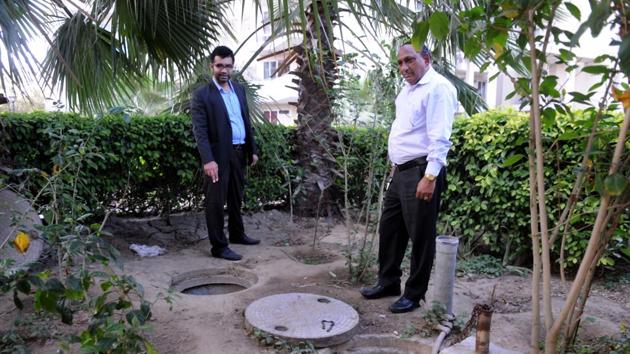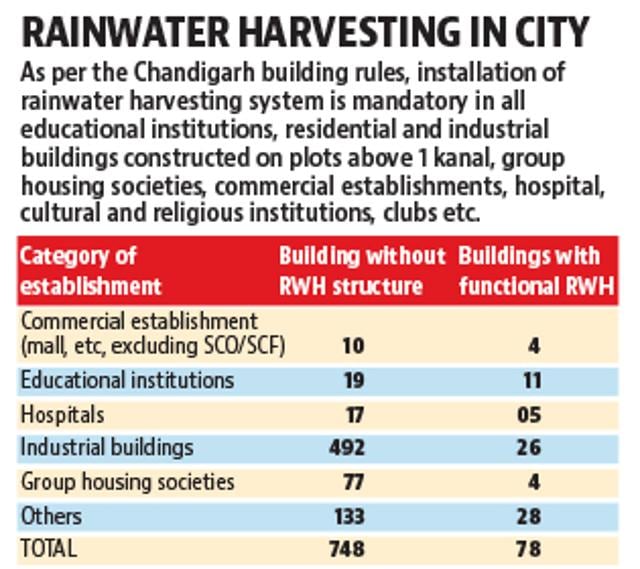Only 9% private buildings in Chandigarh have rainwater harvesting system
As per the Chandigarh building rules, installation of rainwater harvesting system is mandatory in all educational institutions, residential and industrial buildings constructed on plots above 1 kanal, group housing societies, commercial establishments, hospital, cultural and religious institutions, clubs etc
As the Narendra Modi-led Union government champions the cause of water conservation under its recently launched flagship campaign ‘Jal Shakti Abhiyaan’, and the UT administration mulls making rainwater harvesting (RWH) mandatory for all types of buildings, the latest estate office survey shows only 9% of buildings in the city have these systems.

Of the 826 buildings surveyed, including educational institutions, commercial (shopping malls, hotels) and group housing societies, only 78 have functional rainwater harvesting systems.
As per the Chandigarh building rules, installation of rainwater harvesting system is mandatory in all educational institutions, residential and industrial buildings constructed on plots above 1 kanal, group housing societies, commercial establishments, hospital, cultural and religious institutions, clubs etc.

The survey was conducted in July in compliance with Jal Shakti Abhiyaan, which mandates for intensive water conservation measures in identified water stressed blocks and districts across the country.
“The main purpose of the survey, which is part of the Centre’s nationwide exercise, was to collect baseline data of rainwater harvesting systems in the city,” said a senior estate office official privy to the report.
The report was also shared with the municipal corporation earlier this month.
The survey only attempted to find out if the system was installed in the building and not whether these were functional,” said an official.
Also part of the exercise was the collection of data regarding the status of dual-plumbing in the city.
“Only a few buildings were equipped with it,” said the official. The estate office survey didn’t include the government buildings.
As per an engineering department survey, 93 government buildings, including 56 schools and colleges, have rainwater harvesting system.
In order to enforce the provisions of the Chandigarh building rules, which stipulate mandatory installing of rainwater harvesting systems for certain categories of buildings, the estate office will be issuing show-cause notices to defaulters, said a senior estate office official privy to the
issue.
Chandigarh, which has the 256th place in the list of water stressed districts, is part of the Phase 1 of this campaign.
The water table in the city has receded below 300 feet and there are areas such as Raipur Khurd where it has even crossed 350-ft. Moreover, two dozen
MC tubewells have also gone dry due to falling water table
levels.
Drawing of underground water to feed water supply to its ever increasing population and excess concrete structures are among main reasons for the water table receding by 8-10 feet a year, say experts.
To improve the situation, the Jal Shakti Abhiyaan will be undertaken from July 1, 2019 to September 15, 2019.






